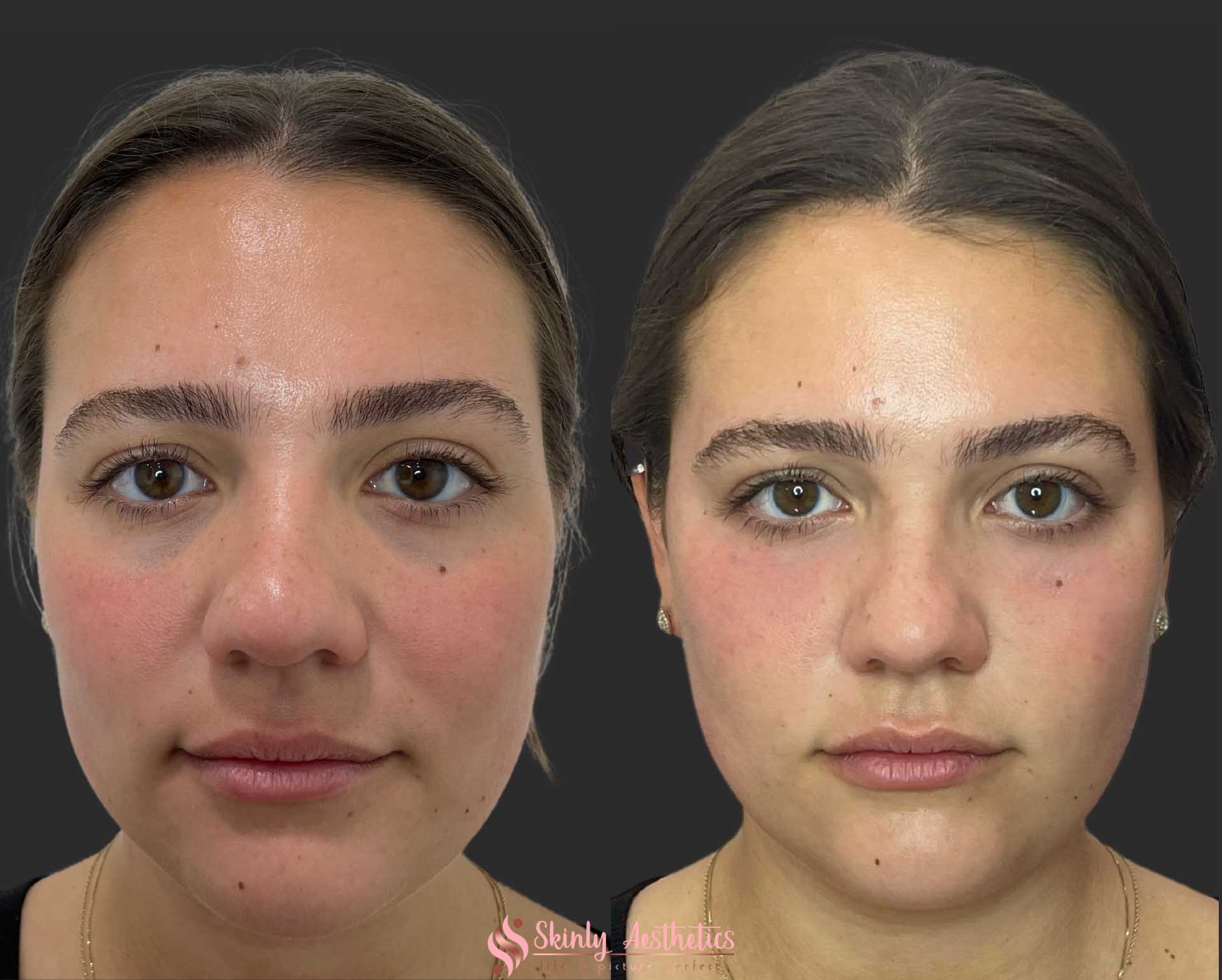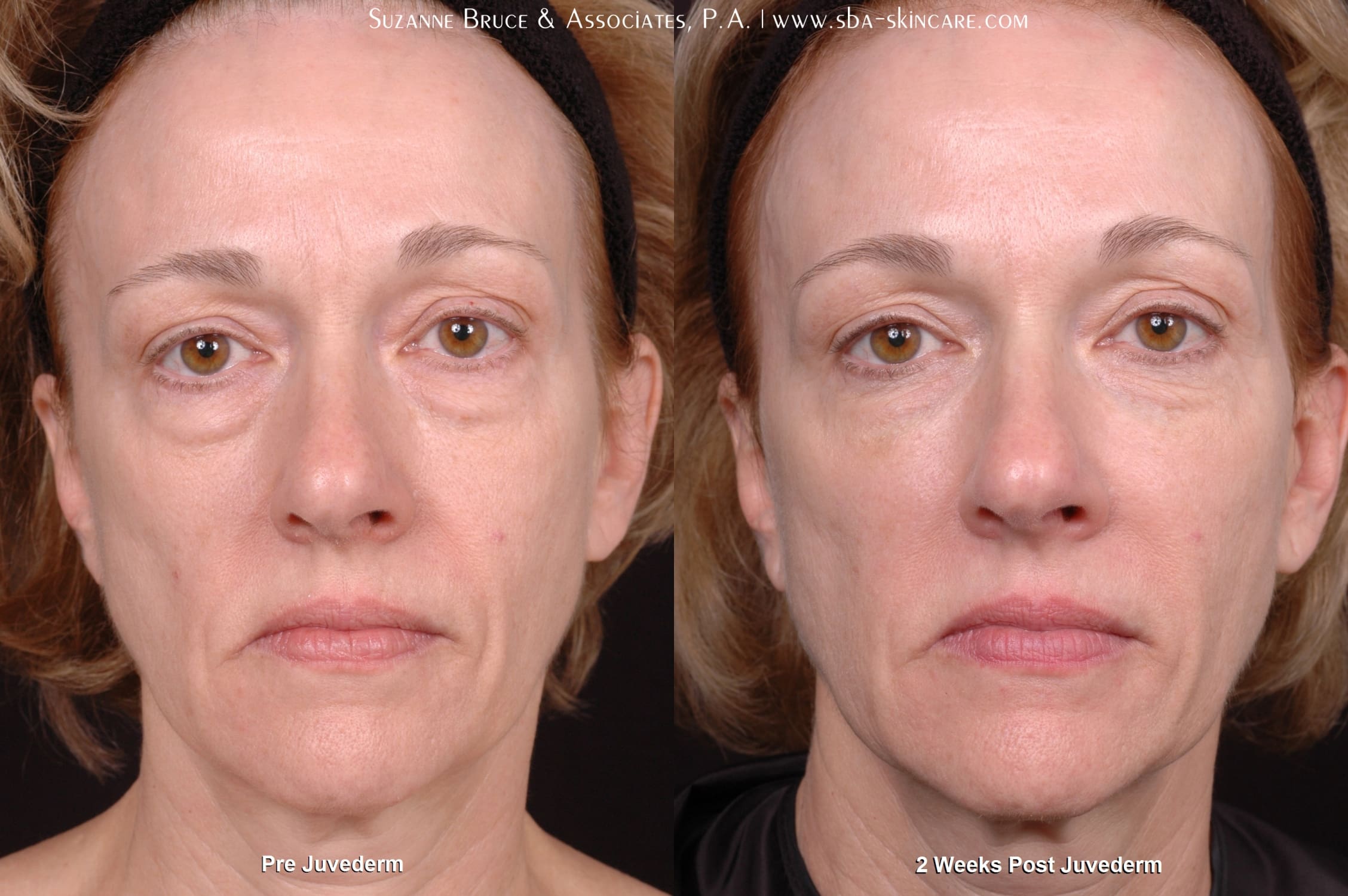Unlocking Brighter Eyes: A Comprehensive Guide To Dermal Fillers Under Eyes
Are you tired of looking tired, even after a full night's sleep? Do dark circles, hollows, or fine lines under your eyes make you feel self-conscious? If so, you're not alone. Many people seek solutions to rejuvenate their under-eye area, and while it might seem like a drastic choice, dermal fillers under the eyes have emerged as a highly effective option for restoring a refreshed and youthful appearance.
In this comprehensive guide, we'll explore the ins and outs of under-eye filler treatments. We'll delve into what exactly under-eye fillers are, how they work, their numerous benefits, what to expect during the procedure, potential side effects, and important factors like longevity and cost. Dermatologists and experts share everything you need to know to help guide you ahead of your under-eye filler consultation, ensuring you make an informed decision about this popular cosmetic treatment.
What Exactly Are Under-Eye Fillers?
Under-eye filler, often referred to as tear trough filler, is a specialized type of dermal filler designed specifically for the delicate area beneath your eyes. At its core, "under-eye filler is a gel-like dermal substance made with different molecular weights of hyaluronic acid (HA)," as experts explain. Hyaluronic acid is a naturally occurring substance in the body that helps retain moisture and add volume, making it an ideal component for fillers.
- Model With No Belly Button
- Purpose Of Nipple Clamps
- Date Ideas Rainy Day
- Best Movies To Sleep To
- Bachelor In Paradise Next Season
These fillers are a targeted injection of hyaluronic acid into specific areas under the eye. The primary goal of under-eye fillers is to address and minimize unwanted concerns such as:
- Dark Circles: Often caused by hollowness or thinning skin that allows blood vessels to show through.
- Hollows: Indentations or depressions that create shadows, making the eyes look sunken.
- Lines or Wrinkles: Fine lines that appear due to volume loss or skin laxity.
- Puffy Bags: In some cases, fillers can even be used to treat certain types of puffy bags, specifically those known as pseudoherniation of orbital fat, where volume loss above the puffiness can make it more prominent.
Under-eye fillers are typically injected into hollow areas under your eyes, including tear troughs (the crease between the lower eyelid and cheek) or orbital hollows. However, their versatility extends beyond these specific points. They "can be used anywhere around the eye that there’s an undesired contour, defect or line," providing a tailored solution to various aesthetic concerns.
Why Consider Under-Eye Fillers? The Benefits
The appeal of under-eye fillers lies in their ability to visibly transform the appearance of the lower eyelid area, offering a more refreshed and youthful look. Here are the key benefits:
- How To Protect Dyed Hair From Chlorine
- June 14th Horoscope
- Balentines Day Nails
- Ina Garten Sour Cream Cornbread
- Little Presents For Friends
Addressing Common Concerns
The most celebrated benefit of under-eye fillers is their effectiveness in tackling persistent under-eye issues:
- Minimizing Dark Circles: For many, dark circles are not just about pigmentation but are often a result of volume loss creating a shadowed effect. Because hyaluronic acid filler fills in the space, it can significantly improve the look of dark circles by lifting the skin and reducing the shadow.
- Filling Hollows: Volume loss under your eyes is precisely what filler works best for. By adding subtle volume, fillers smooth out these hollow spaces, creating a seamless transition from the lower eyelid to the cheek.
- Smoothing Lines and Wrinkles: By restoring lost volume and hydrating the skin from within, under-eye fillers can soften the appearance of fine lines and wrinkles, contributing to a smoother skin texture.
- Improving Puffy Bags: While counterintuitive, in specific cases, fillers can help camouflage certain types of under-eye puffiness by adding volume to the surrounding areas, thereby blending the contour more seamlessly.
Restoring a Youthful, Refreshed Look
Ultimately, dermal fillers may be a good choice for restoring the look of youth to your under-eye area. Your doctor can put them in the area under your eyes to smooth out the hollow spaces and eliminate shadows that make you appear older or perpetually tired. The result is a more vibrant, alert, and rejuvenated appearance that can significantly boost confidence.
The Procedure: What to Expect
Deciding to get under-eye fillers involves understanding the process from consultation to recovery. Here’s what you should know:
The Consultation is Key
Before any injection, a thorough consultation with a qualified and experienced practitioner is paramount. This is your opportunity to discuss your concerns, aesthetic goals, and medical history. During this consultation, you should ask what type of filler they will use. Most doctors use FDA-approved hyaluronic acid dermal filler for the tear trough, especially if it’s a patient’s first time, due to its safety profile and reversibility.
The Injection Process
The actual procedure is relatively quick. After cleansing the area, a topical numbing cream may be applied to enhance comfort. Then, hyaluronic acid filler is precisely injected into the under-eye area. The practitioner uses a fine needle or a blunt-tipped cannula to meticulously place the filler, often in small aliquots, to ensure a smooth, natural-looking result. The goal is to fill in the space and address the specific concerns like hollows or dark circles.
Post-Procedure & Recovery
Immediately after the procedure, you might experience some mild swelling, redness, or bruising at the injection sites. These side effects are generally temporary and subside within a few days to a week. Your practitioner will provide specific aftercare instructions, which typically include avoiding strenuous exercise, excessive heat, and certain medications that can thin the blood for a short period.
Important Considerations: Risks, Side Effects, and Longevity
While under-eye fillers are generally safe when performed by an experienced professional, it’s crucial to be aware of potential side effects and other factors.
Potential Side Effects
As with any cosmetic procedure, there are potential side effects. Common ones include:
- Swelling
- Bruising
- Redness
- Tenderness
More serious, though rare, complications can occur, such as lumps or nodules, allergic reactions, or vascular occlusion (where the filler blocks a blood vessel). This underscores the importance of choosing a highly qualified and experienced dermatologist or plastic surgeon who has a deep understanding of facial anatomy and can manage any complications.
How Long Do They Last?
The longevity of under-eye fillers varies from person to person and depends on the type of hyaluronic acid filler used, individual metabolism, and lifestyle factors. Generally, under-eye fillers can last anywhere from 6 months to 18 months. Over time, the body naturally metabolizes the hyaluronic acid, and the effects will gradually diminish, requiring touch-up treatments to maintain the desired results.
Cost Factors
The cost of under-eye fillers can vary significantly based on several factors, including:
- The geographic location of the clinic.
- The experience and reputation of the injector.
- The specific type and brand of hyaluronic acid filler used.
- The amount of filler needed to achieve the desired correction.
During your consultation, your practitioner should provide a clear breakdown of the costs involved.
Who is a Good Candidate?
Under-eye fillers are best suited for individuals who have:
- Hollows or indentations under their eyes.
- Dark circles primarily caused by shadowing due to volume loss.
- Fine lines or wrinkles that can be softened by added volume.
- Realistic expectations about the results.
- Good overall health and no contraindications to filler treatments.
It's important to note that fillers are not a solution for all under-eye concerns. For instance, severe skin laxity, significant fat herniation (true eye bags), or hyperpigmentation (dark circles due to excess melanin) might require different or complementary treatments.
Your Journey to Brighter Eyes
Under-eye filler, or any dermal (skin) filler, may seem like a significant step, but the truth is that it may be one of the few things that can actually change the appearance of your under-eye area effectively, especially when addressing volume loss. By strategically injecting hyaluronic acid, these fillers can significantly reduce the appearance of dark circles, smooth out hollows, and diminish fine lines, restoring a more youthful and refreshed look.
Looking into under-eye filler to treat wrinkles and dark circles? This guide has provided everything you need to know, including benefits, risks, and how long it lasts. The key to a successful outcome lies in choosing a board-certified dermatologist or plastic surgeon with extensive experience in this delicate area. With expert advice, you can discover the benefits of dermal fillers under your eyes and achieve a smoother, more youthful-looking under-eye area, helping you put your best, brightest face forward.
Article Recommendations
- Balentines Day Nails
- Gray Hair With Lavender Highlights
- Chrom Nails
- Jessica Alba Curly Hair
- Nipple Clamps Use



Detail Author:
- Name : Callie Bode
- Username : cristina.davis
- Email : annetta.emard@hotmail.com
- Birthdate : 1976-09-01
- Address : 51928 Amos Prairie Port Verlie, IL 58130-2148
- Phone : 281-950-0392
- Company : Bosco, Hill and Moen
- Job : Gaming Supervisor
- Bio : Maxime magnam nobis suscipit. Ea quam rerum autem aspernatur harum tempora. Fugit cumque et reprehenderit ut dolores. Dolor laborum facere et a labore aut ut. Quia qui earum qui in enim eius et.
Socials
tiktok:
- url : https://tiktok.com/@katrine8275
- username : katrine8275
- bio : Ipsum et quaerat nemo amet perferendis dignissimos repellendus.
- followers : 4474
- following : 2155
twitter:
- url : https://twitter.com/katrine3914
- username : katrine3914
- bio : Ab nihil velit rerum omnis dolorum tenetur. Beatae facilis eaque tempore. Doloribus quia voluptatibus amet asperiores. Sunt in repellat esse est minima.
- followers : 4305
- following : 673
instagram:
- url : https://instagram.com/katrine.wisozk
- username : katrine.wisozk
- bio : Ut culpa omnis vel sit suscipit porro. Et ratione officiis et delectus officia assumenda sunt ad.
- followers : 6882
- following : 1224
facebook:
- url : https://facebook.com/katrine_dev
- username : katrine_dev
- bio : Sapiente magni ut nam atque commodi quaerat.
- followers : 5342
- following : 2691